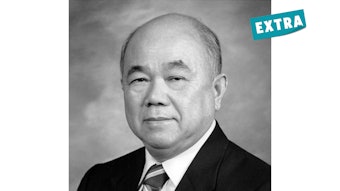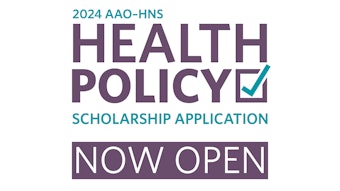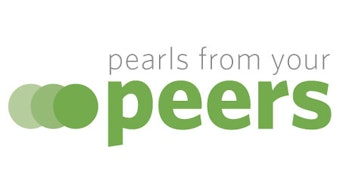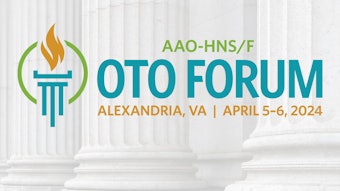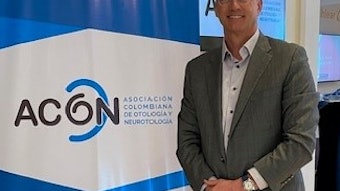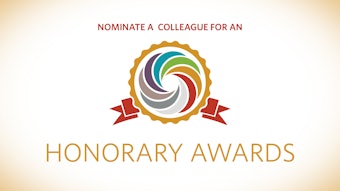Ankyloglossia Untangled
Otolaryngologist-head and neck surgeons should be at the forefront of the science of ankyloglossia and must be the preferred specialists to comprehensively evaluate and treat when symptomatic.
Bobby Ghaheri, MD, and Dale Tylor, MD
One of the most debated controversies in otolaryngology centers on the management of ankyloglossia. A large divide on the impact of tongue tie and the merit of frenotomy/frenuloplasty procedures exists between most otolaryngologists and pediatricians on one side, and colleagues in dentistry, lactation, other ancillary health professions, and patients on the other. Confusion related to poor anatomic descriptions of ankyloglossia, erroneous understanding of tongue physiology, and a pervasive perception that non-otolaryngologists offer the procedure for purely financial reasons has led to many patients seeking care from non-otolaryngologists because they fear their concerns will be dismissed in our offices. Sensationalized articles can be found in major news outlets, often aimed at increasing “clicks” by stoking fear in a patient population that may be vulnerable, such as the mother-infant dyad. We need to more clearly define ankyloglossia to better understand what is pathologic and when surgical intervention should be considered, as an increasing number of publications are demonstrating a positive impact from addressing ankyloglossia in an appropriate population.
![Figure 1. Woodcut from the 17th century describing surgical technique for frenotomy. Obladen, Michael. 'Much ado about nothing: two millenia of controversy on tongue-tie.' Neonatology 97, no. 2 (2010): 83-89. Reproduced with permission from S. Karger AG, Basel, Switzerland. Woodcuts showing the operative techniques of Fabricius in 1620 (a) [‘the tongue is held with a handkerchief and the band loosened with a falciform knifelet’] and Scultertus in 1666 (b) ['how the surgeon lifts the tongue with a silver instrument and dissects the attached band with a small sharp scissors']. (c) Ranula (grenouillette) with Petit's spatula on frenulum.](https://img.ascendmedia.com/files/base/ascend/hh/image/2024/02/neo235682_F01.65c65a2acc91f.png?auto=format%2Ccompress&fit=max&q=70&w=400) Figure 1. Woodcut from the 17th century describing surgical technique for frenotomy. Obladen, Michael. "Much ado about nothing: two millenia of controversy on tongue-tie." Neonatology 97, no. 2 (2010): 83-89. Reproduced with permission from S. Karger AG, Basel, Switzerland.
Figure 1. Woodcut from the 17th century describing surgical technique for frenotomy. Obladen, Michael. "Much ado about nothing: two millenia of controversy on tongue-tie." Neonatology 97, no. 2 (2010): 83-89. Reproduced with permission from S. Karger AG, Basel, Switzerland.
Woodcuts showing the operative techniques of Fabricius in 1620 (a) [‘the tongue is held with a handkerchief and the band loosened with a falciform knifelet’] and Scultertus in 1666 (b) ['how the surgeon lifts the tongue with a silver instrument and dissects the attached band with a small sharp scissors']. (c) Ranula (grenouillette) with Petit's spatula on frenulum.
Ankyloglossia as an entity is not new. Indeed, it has been documented as a medical issue for over two millennia. References to the condition can be found in the writings of Aristotle, Celsus, Galen, and Paul of Aegina, and in biblical references such as Mark 7:35, in which Jesus was described as loosening a “tongue string,” or in writings that Louis XIII had undergone frenotomy as a newborn (Obladen 2010). After the introduction of commercial formula over 150 years ago, there was no longer an absolute necessity to nurse an infant. Bottle feeding could be used to compensate for a poor latch in many instances, which took away some of the experience of healthcare professionals treating ankyloglossia. Over the past 40 years, however, “breast is best” initiatives succeeded at increasing breastfeeding rates. This increase in breastfeeding rates, which revealed the scale of latch issues, along with social media groups encouraging patients to self-advocate in cases when nursing was suboptimal, marked the start of a patient-led push for diagnosis and treatment. This change led to a significant increase in documented rates of ankyloglossia and frenotomy or frenuloplasty. Along with these changes have come a plethora of scientific publications demonstrating the merit of addressing symptomatic ties from a latch standpoint. However, otolaryngologists and pediatricians became skeptical that something more nefarious was leading to increased rates of treatment—namely that babies were being inappropriately operated on for the financial gain of the frenotomy proceduralist.
Classically, ankyloglossia is defined as the presence of a restrictive sublingual frenulum that limits mobility. In practice, this definition is typically applied to ties that attach to the tip of the tongue. In these instances, common practice is to release these ties sharply—a very safe and fast procedure that mobilizes the anterior portion of the tongue. Sixteen years ago, however, an important clinical paper was published that objectively documented the movement of the tongue during breastfeeding (Geddes 2008). In this study, infant submental ultrasound was performed while the baby was breastfeeding, allowing visualization of the oral cavity and pharynx along with the mother’s breast structures. The novel findings of this study upended long-accepted erroneous beliefs that extraction of milk during breastfeeding was via a peristaltic mechanical motion starting at the tongue tip that continued posteriorly. Instead, objective evidence proved that the crucial mechanism during breastfeeding is mid-tongue elevation toward the palate, creating a seal with the nipple, thereby generating an intraoral vacuum. Further studies confirmed these findings from a biomechanical perspective (Elad 2014), and we have been able to recreate these ultrasounds in the office using both traditional ultrasound machines along with the recent advent of portable wireless ultrasound systems, corroborating the findings in these studies.
Despite clinical evidence demonstrating the importance of mid-tongue elevation for normal breastfeeding latch generation, many otolaryngologists continue to focus on what was taught to us years ago. There is still attention given to tongue protrusion beyond the mandibular gumline as a benchmark for normal tongue movement, despite the fact that there is no published evidence demonstrating the importance of tongue protrusion during feeding. There has been similar resistance to the acceptance of the presence of ankyloglossia when the tip of the tongue can move but the mid-tongue cannot, which is the typical scenario with posterior tongue tie. The name “posterior tongue tie” has been problematic since coined, as it erroneously leads some to infer that it implies the presence of ankyloglossia of the posterior tongue when it is meant to describe restriction in a deeper, less visibly obvious portion of the ventral tongue. The submucosal or deeper restrictions of posterior ankyloglossia always require palpation to identify. A lack of understanding in otolaryngology regarding how to examine such restrictions, focusing on tip elevation or the presence of a visible anterior web or band and avoidance of palpation, has led to underdiagnosis of this anatomic restriction.
The lack of a standardized grading system has led many to resist an evolution in what is diagnosed as ankyloglossia and what is not. When lactation consultants, who may have significant insight into the abnormalities of infant tongue movement and a different understanding of tongue physiology, inform parents about the presence of sublingual restriction, they will often seek out a consultation with an otolaryngologist. The discordant messages that can result often make it very challenging for parents to navigate appropriate next steps for the treatment of underlying symptoms. It is not uncommon for a lactation consultant to feel that a restriction is present while the otolaryngologist does not. In many instances, parents will seek care elsewhere if the restriction is still felt to be the problem.
To further complicate clinical decision-making, the symptoms attributed to infant ankyloglossia are numerous and can be present in many combinations. While nipple pain and poor infant weight gain are the most commonly cited reasons to perform a frenotomy, there are numerous other potential symptoms that can be improved by surgical release of ankyloglossia. Infants with tongue restriction typically compensate by overactive jaw use, which can result in nipple damage, poor milk transfer (from nipple compression) and infant reflux from aerophagia.
From a surgical standpoint, most otolaryngologists will release visible anterior tongue ties using scissors, though cautery, coblation, and laser can also be employed. In these instances, the anterior portion of the tongue is mobilized, which can certainly be helpful for improving latch quality and nipple pain. In many instances, however, an anterior frenotomy is insufficient in maintaining latch quality or in treating symptoms beyond nipple pain because the mid-portion tethering persists. Achieving full mobility of the tongue has been demonstrated to improve symptoms in residual posterior tongue tie following frenotomy or in children with isolated posterior tongue tie where no conservative release is possible (Ghaheri 2017, 2018). The surgical technique for a full release involves intentional lateral mucosal incisions to release the genioglossus muscle without cutting into the muscle itself. The instrument used to perform that release is irrelevant; the incisional technique is what dictates whether or not a full release is achieved. The practice of using a hemostat to crush the tissue invariably crushes the genioglossus itself and is unnecessary given that the only cuts needed are mucosal. Brief compression with ice-cold gauze or gauze impregnated with oxymetazoline can help avoid the need for caustic silver nitrate application.
There has been some consternation surrounding the increasing frequency of frenotomy in the United States, with several studies demonstrating a significant increase in the diagnosis of ankyloglossia (Walsh 2017, Wei 2022). Many otolaryngologists respond to this significant increase in diagnosis with sentiments that frenotomy is a fad or that ankyloglossia is being blamed for latch challenges when other factors may be the real cause. It is important to understand that the increasing trends in frenotomy rates coincide with increased published research. Otolaryngologist-head and neck surgeons should be at the forefront of the science of ankyloglossia and must be the preferred specialists to comprehensively evaluate and treat when symptomatic. When novel technology is used to help understand tongue physiology (Geddes 2008, Ghaheri 2022), it is not unreasonable to change our existing paradigms in an attempt to help the mother-baby dyad.
References
Elad, David, Pavel Kozlovsky, Omry Blum, Andrew F. Laine, Ming Jack Po, Eyal Botzer, Shaul Dollberg, Mabel Zelicovich, and Liat Ben Sira. "Biomechanics of milk extraction during breast-feeding." Proceedings of the National Academy of Sciences 111, no. 14 (2014): 5230-5235.
Geddes, Donna T., Diana B. Langton, Ian Gollow, Lorili A. Jacobs, Peter E. Hartmann, and Karen Simmer. "Frenulotomy for breastfeeding infants with ankyloglossia: effect on milk removal and sucking mechanism as imaged by ultrasound." Pediatrics 122, no. 1 (2008): e188-e194.
Ghaheri, Bobak A., Melissa Cole, Sarah C. Fausel, Maria Chuop, and Jess C. Mace. "Breastfeeding improvement following tongue‐tie and lip‐tie release: A prospective cohort study." The Laryngoscope 127, no. 5 (2017): 1217-1223.
Ghaheri, Bobak A., Melissa Cole, and Jess C. Mace. "Revision lingual frenotomy improves patient-reported breastfeeding outcomes: a prospective cohort study." Journal of Human Lactation 34, no. 3 (2018): 566-574.
Ghaheri, Bobak A., Douglas Lincoln, Tuyet Nhi T. Mai, and Jess C. Mace. "Objective improvement after frenotomy for posterior tongue-tie: a prospective randomized trial." Otolaryngology–Head and Neck Surgery 166, no. 5 (2022): 976-984.
Obladen, Michael. "Much ado about nothing: two millenia of controversy on tongue-tie." Neonatology 97, no. 2 (2010): 83-89.
Walsh, Jonathan, Anne Links, Emily Boss, and David Tunkel. "Ankyloglossia and lingual frenotomy: national trends in inpatient diagnosis and management in the United States, 1997-2012." Otolaryngology–Head and Neck Surgery 156, no. 4 (2017): 735-740.
Wei, Eric X., Kara D. Meister, Karthik Balakrishnan, Alan G. Cheng, and Z. Jason Qian. "Ankyloglossia: Clinical and Sociodemographic Predictors of Diagnosis and Management in the United States, 2004 to 2019." Otolaryngology–Head and Neck Surgery 169, no. 4 (2023):1020-1027.

